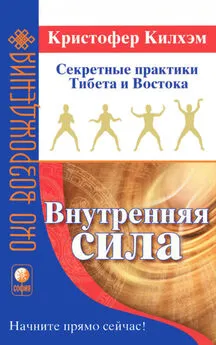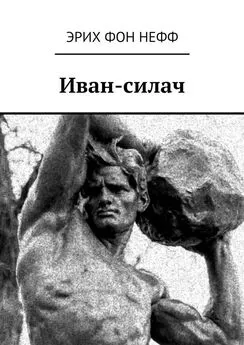Кристин Нефф - Внутренняя сила. Как заявить о себе во весь голос и научиться отстаивать свои интересы
- Название:Внутренняя сила. Как заявить о себе во весь голос и научиться отстаивать свои интересы
- Автор:
- Жанр:
- Издательство:неизвестно
- Год:2022
- Город:Москва
- ISBN:9785001952541
- Рейтинг:
- Избранное:Добавить в избранное
-
Отзывы:
-
Ваша оценка:
Кристин Нефф - Внутренняя сила. Как заявить о себе во весь голос и научиться отстаивать свои интересы краткое содержание
Эта книга для женщин, которые хотят найти источник силы внутри себя, чтобы действовать смело, не бояться говорить «нет», перестать быть удобным инструментом для удовлетворения чужих потребностей и начать думать об исполнении собственных желаний.
На русском языке публикуется впервые.
Внутренняя сила. Как заявить о себе во весь голос и научиться отстаивать свои интересы - читать онлайн бесплатно ознакомительный отрывок
Интервал:
Закладка:
42
S. W. Porges, The Polyvagal Theory: Neurophysiological Foundations of Emotions, Attachment, Communication, and Self-Regulation (New York: Norton, 2011).
43
R. J. Gruen et al., “Vulnerability to Stress: Self-Criticism and Stress-Induced Changes in Biochemistry,” Journal of Personality 65, № 1 (1997): 33–47.
44
S. Herculano-Houzel, The Human Advantage: A New Understanding of How Our Brain Became Remarkable (Cambridge, MA: MIT Press, 2016).
45
S. E. Taylor, “Tend and Befriend: Biobehavioral Bases of Affiliation Under Stress,” Current Directions in Psychological Science 15, № 6 (2006): 273–277.
46
C. S. Carter, “Oxytocin Pathways and the Evolution of Human Behavior,” Annual Review of Psychology 65 (2014): 17–39.
47
S. W. Porges, “The Polyvagal Theory: Phylogenetic Contributions to Social Behavior,” Physiology and Behavior 79, № 3 (2003): 503–513.
48
T. Field, Touch (Cambridge, MA: MIT Press, 2014).
49
P. R. Shaver et al., “Attachment Security as a Foundation for Kindness toward Self and Others,” in K. W. Brown and M. R. Leary, eds., The Oxford Handbook of Hypoegoic Phenomena (Oxford: Oxford University Press, 2017), 223–242.
50
N. D. Ross, P. L. Kaminski, and R. Herrington, “From Childhood Emotional Maltreatment to Depressive Symptoms in Adulthood: The Roles of Self-Compassion and Shame,” Child Abuse and Neglect 92 (2019): 32–42.
51
R. C. Fraley and N. W. Hudson, “The Development of Attachment Styles,” in J. Specht, ed., Personality Development across the Lifespan (Cambridge, MA: Elsevier Academic Press, 2017), 275–292.
52
M. Navarro-Gil et al., “Effects of Attachment-Based Compassion Therapy (ABCT) on Self-Compassion and Attachment Style in Healthy People,” Mindfulness 1, № 1 (2018): 51–62.
53
L. R. Miron et al., “The Potential Indirect Effect of Childhood Abuse on Posttrauma Pathology through Self-Compassion and Fear of Self-Compassion,” Mindfulness 7, № 3 (2016): 596–605.
54
C. Germer, The Mindful Path to Self-Compassion: Freeing Yourself from Destructive Thoughts and Emotions (New York: Guilford Press, 2009).
55
A. Lutz et al., “Attention Regulation and Monitoring in Meditation,” Trends in Cognitive Sciences 12, № 4 (2008): 163–169.
56
N. N. Singh et al., “Soles of the Feet: A Mindfulness-Based Self-Control Intervention for Aggression by an Individual with Mild Mental Retardation and Mental Illness,” Research in Developmental Disabilities 24, № 3 (2003): 158–169.
57
T. Parker-Pope, “Go Easy on Yourself, a New Wave of Research Shows,” New York Times, February 29, 2011. https://well.blogs.nytimes.com/2011/02/28/go-easy-on-yourself-a-new-wave-of-research-urges/.
58
S. Salzberg, “Fierce Compassion,” Omega, 2012. https://www.eomega.org/article/fierce-compassion.
59
“Sharon Salzberg + Robert Thurman: Meeting Our Enemies and Our Suffering,” On Being with Krista Tippett, October 31, 2013. https://onbeing.org/programs/sharon-salzberg-robert-thurman-meeting-our-enemies-and-our-suffering.
60
M. Palmer, Yin & Yang: Understanding the Chinese Philosophy of Opposites (London: Piatkus Books, 1997).
61
E. Olson, “The Buddhist Female Deities,” in S. Nicholson, ed., The Goddess Re-Awakening: The Feminine Principle Today (Wheaton, IL: Quest Books, 1989), 80–90.
Интервал:
Закладка:










